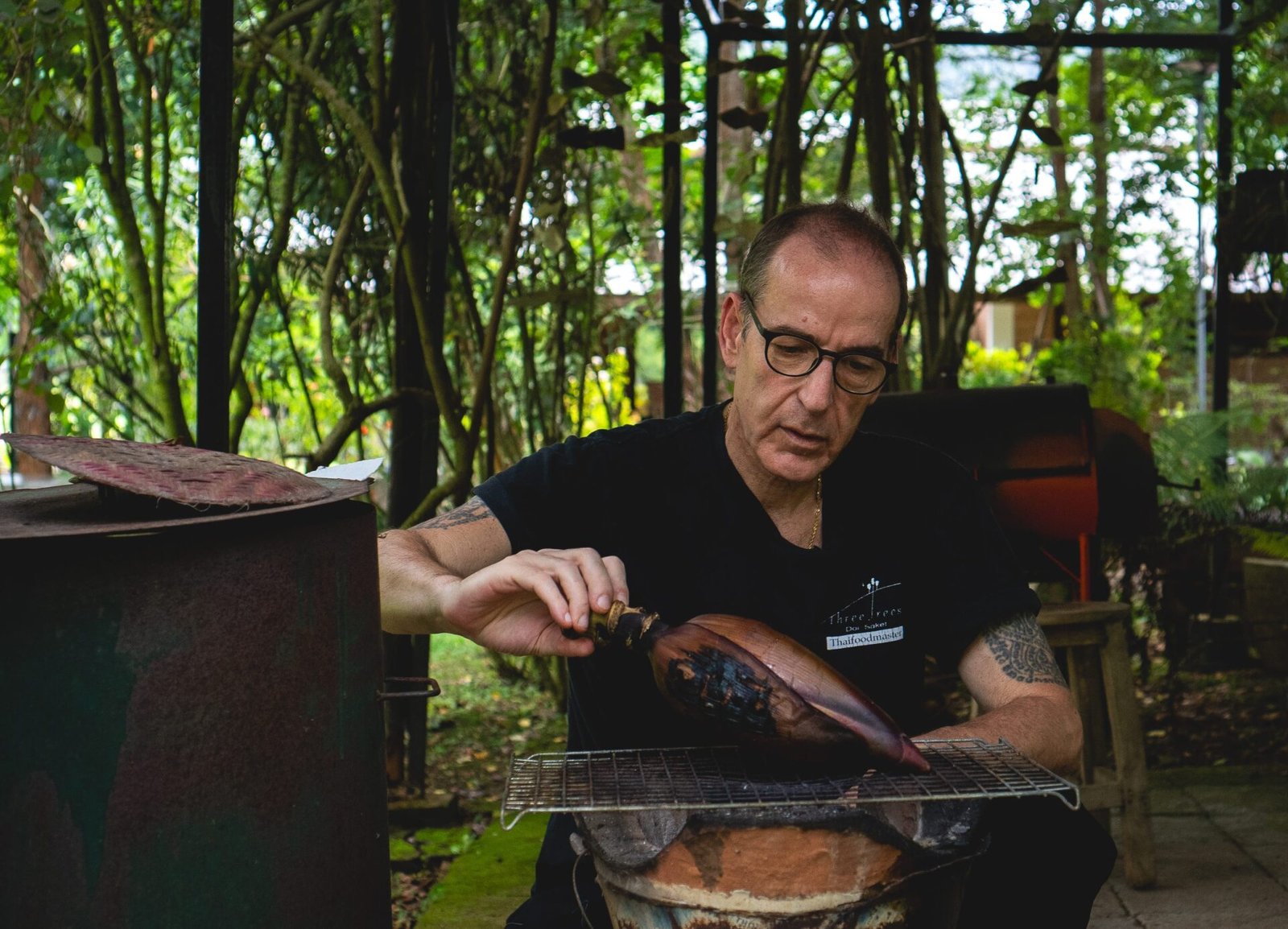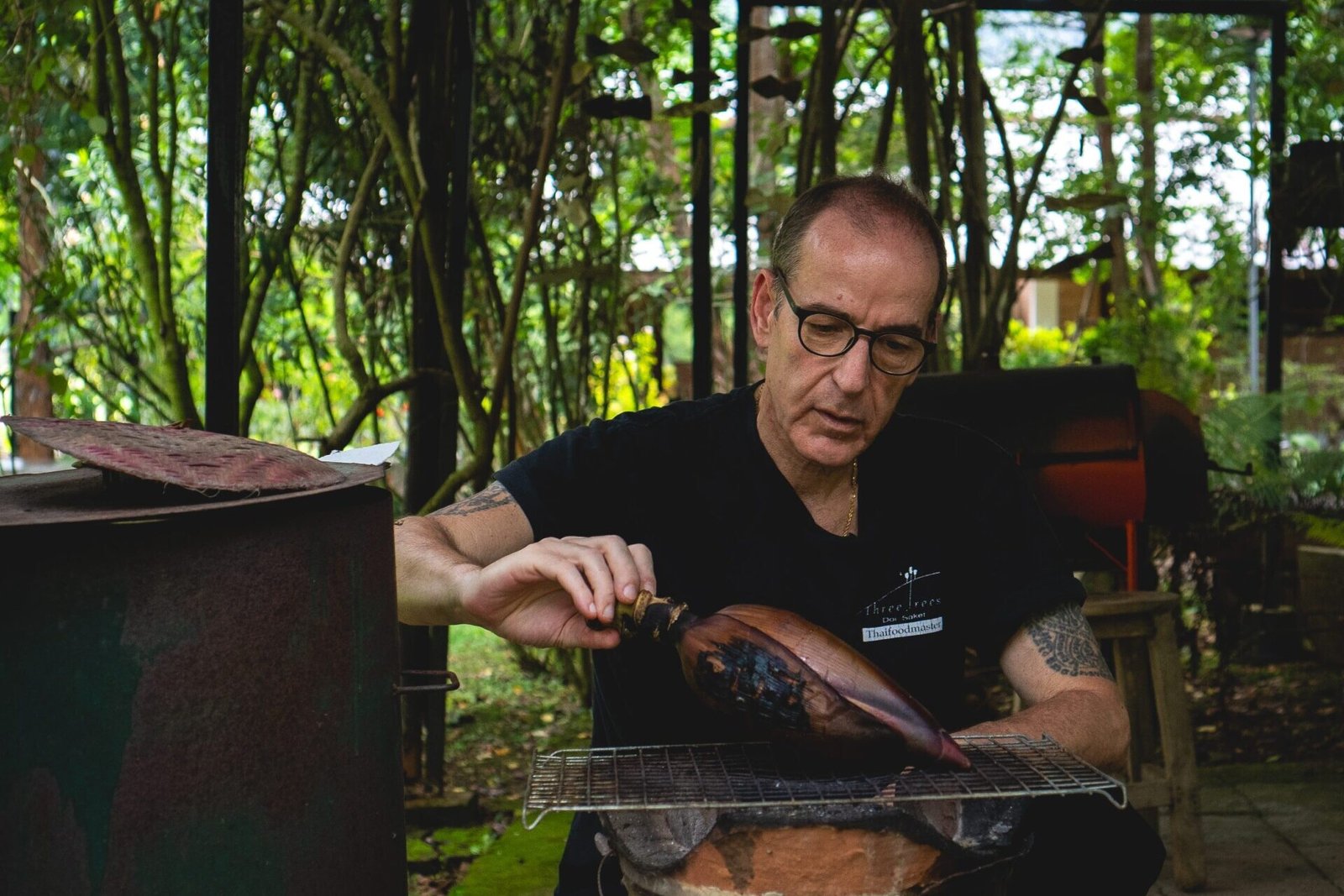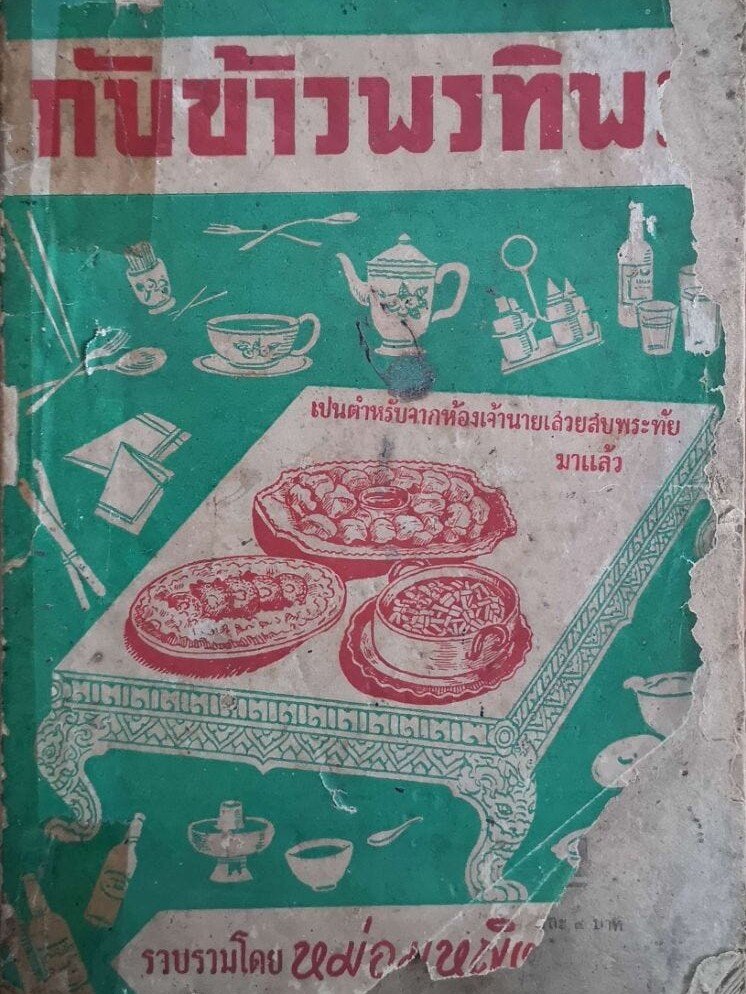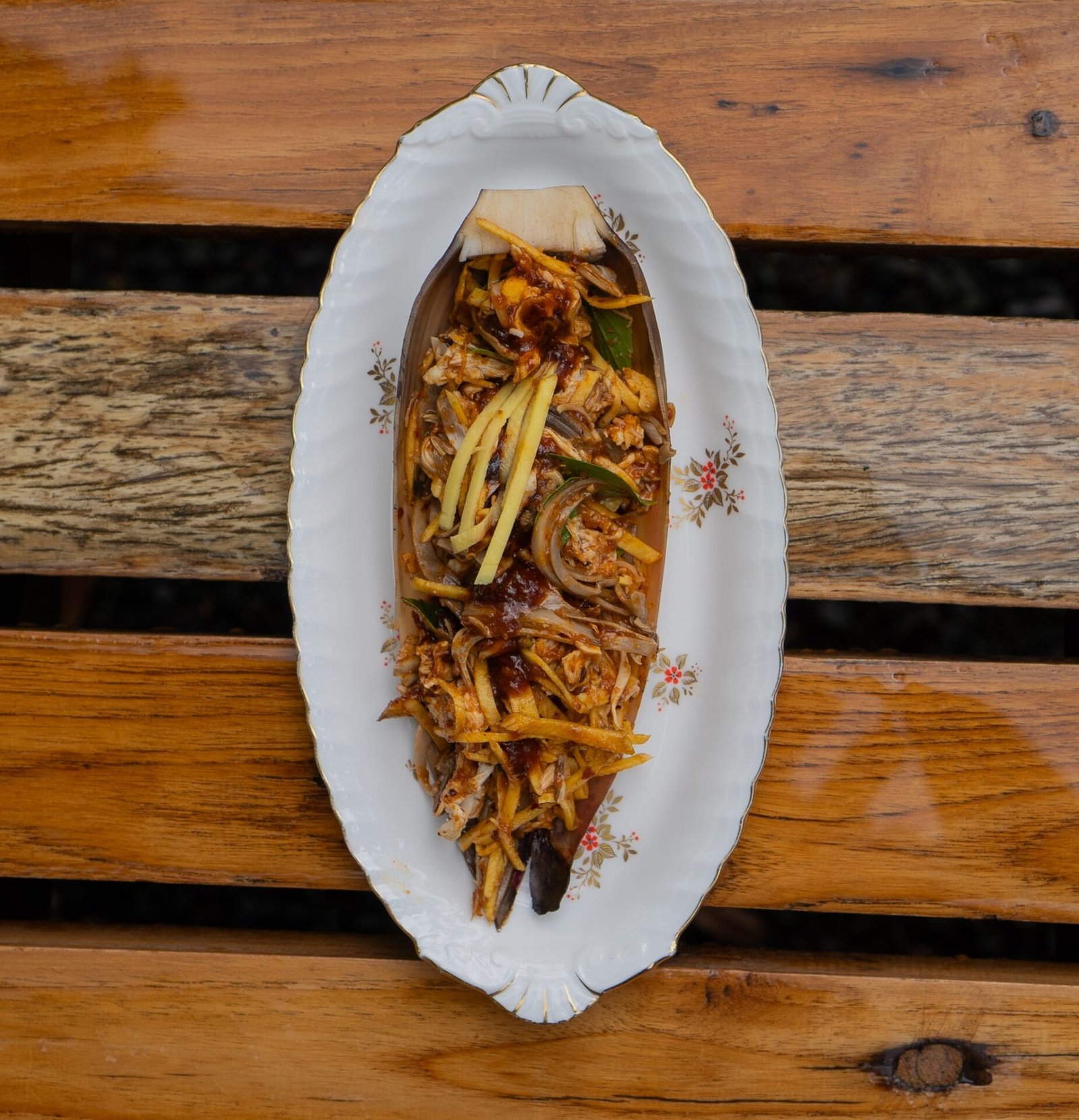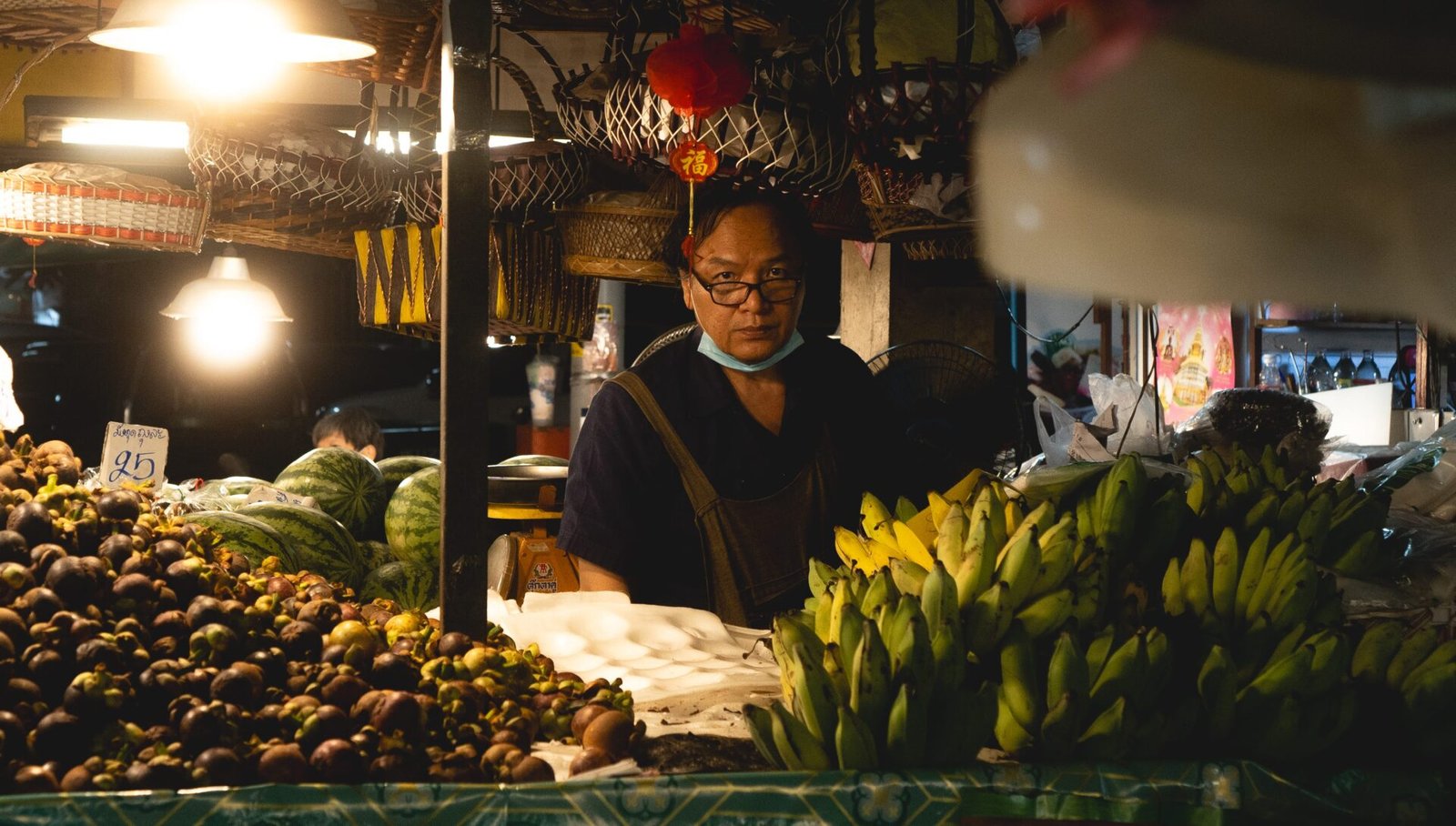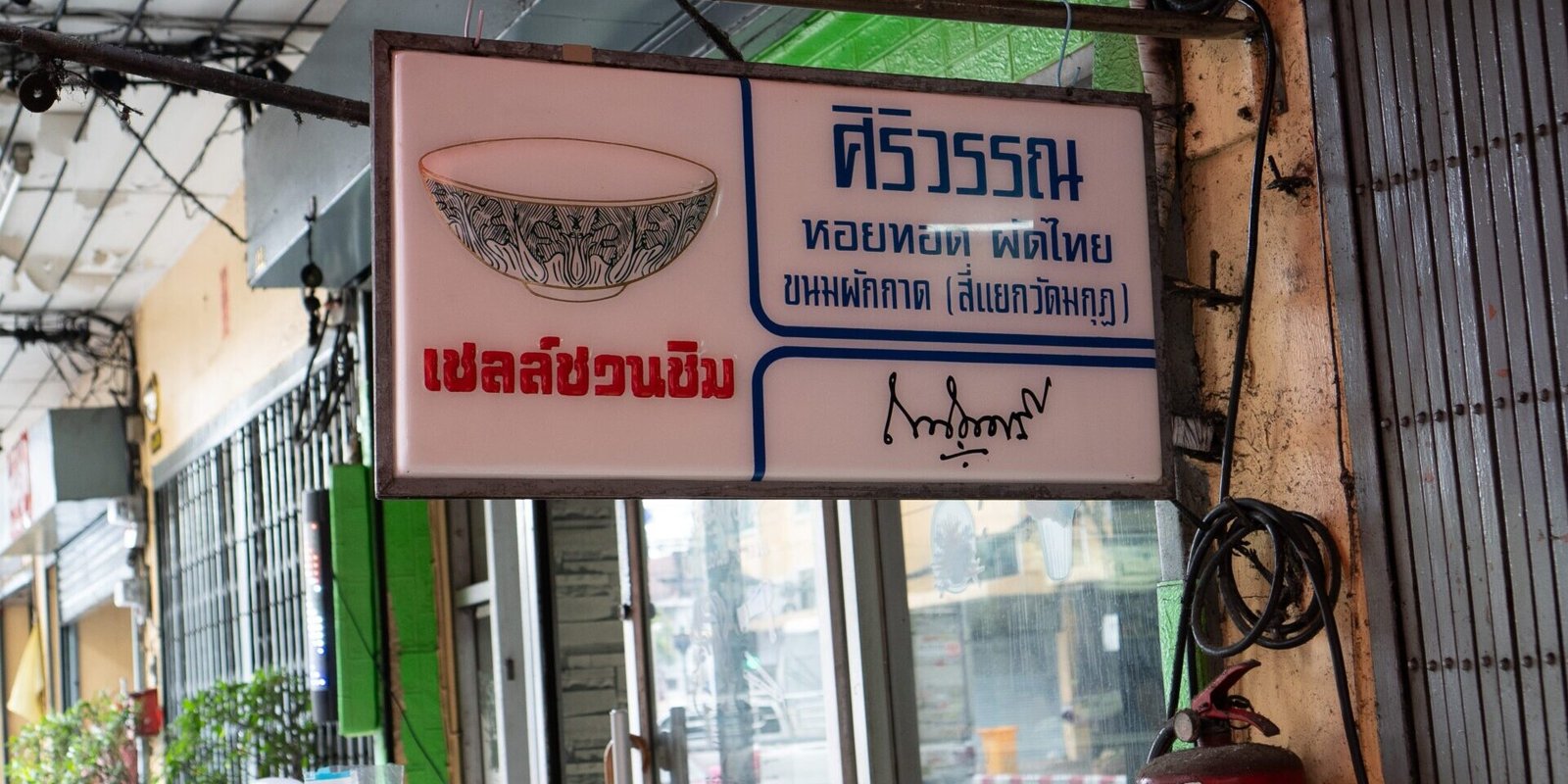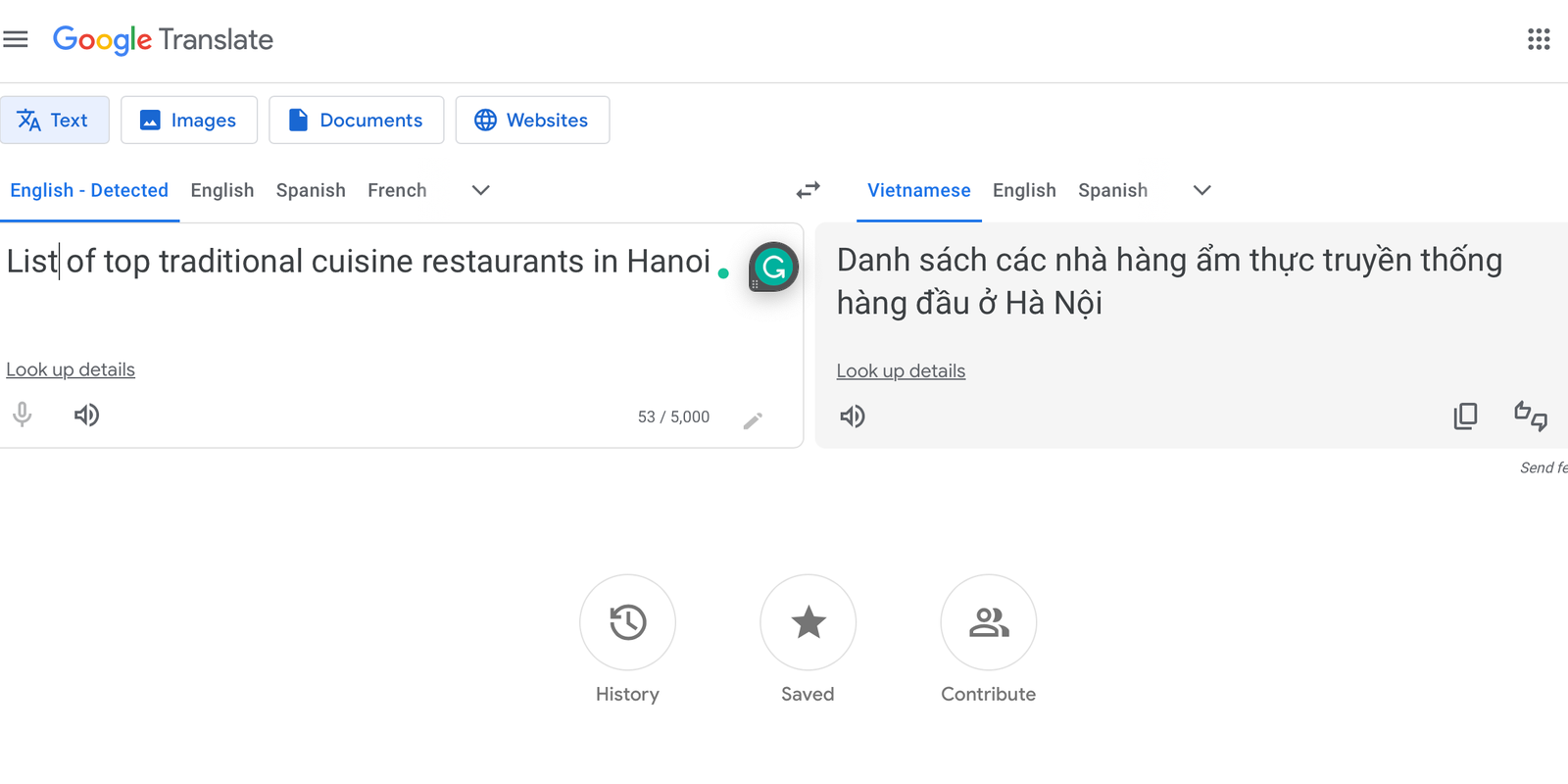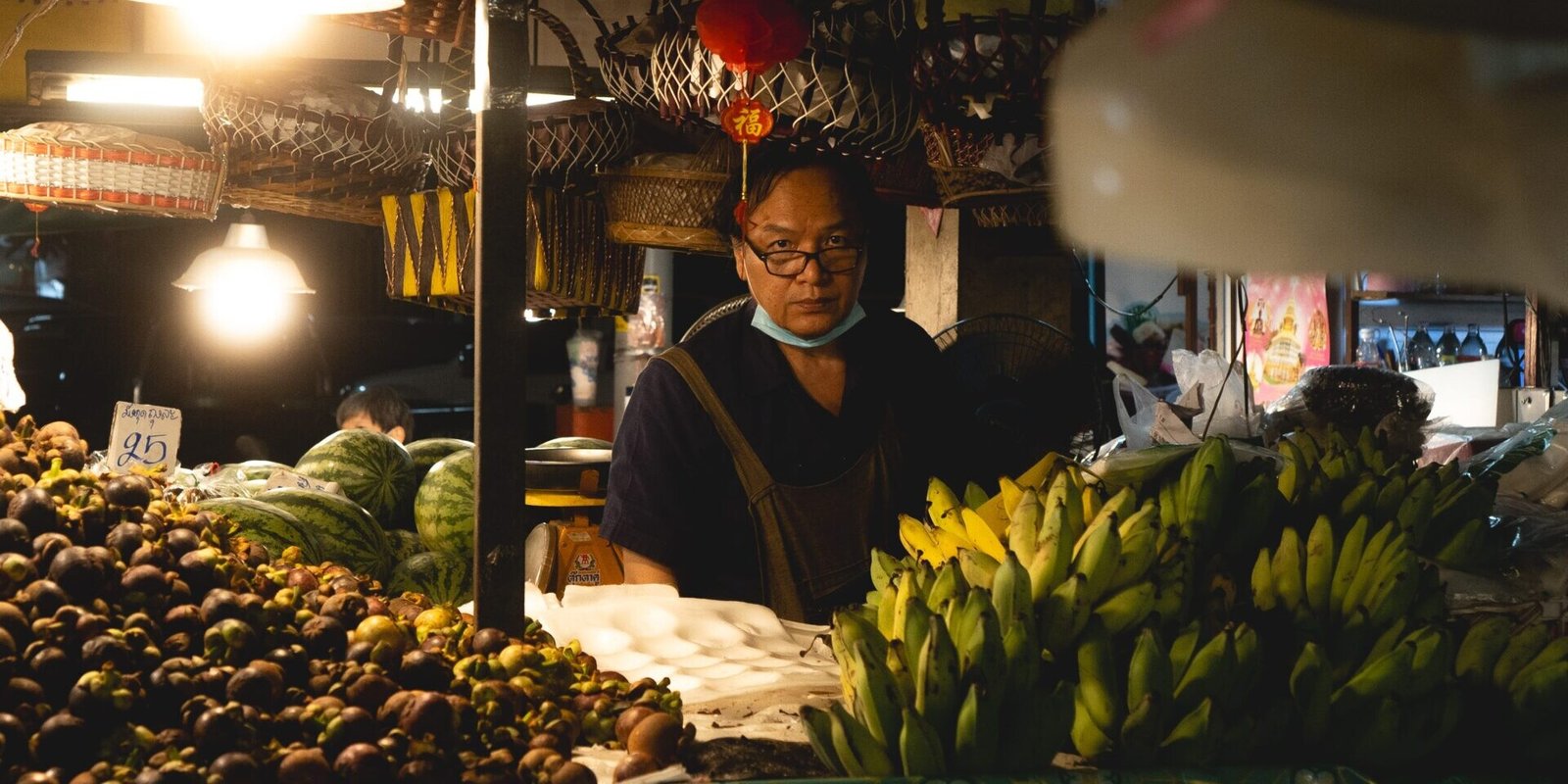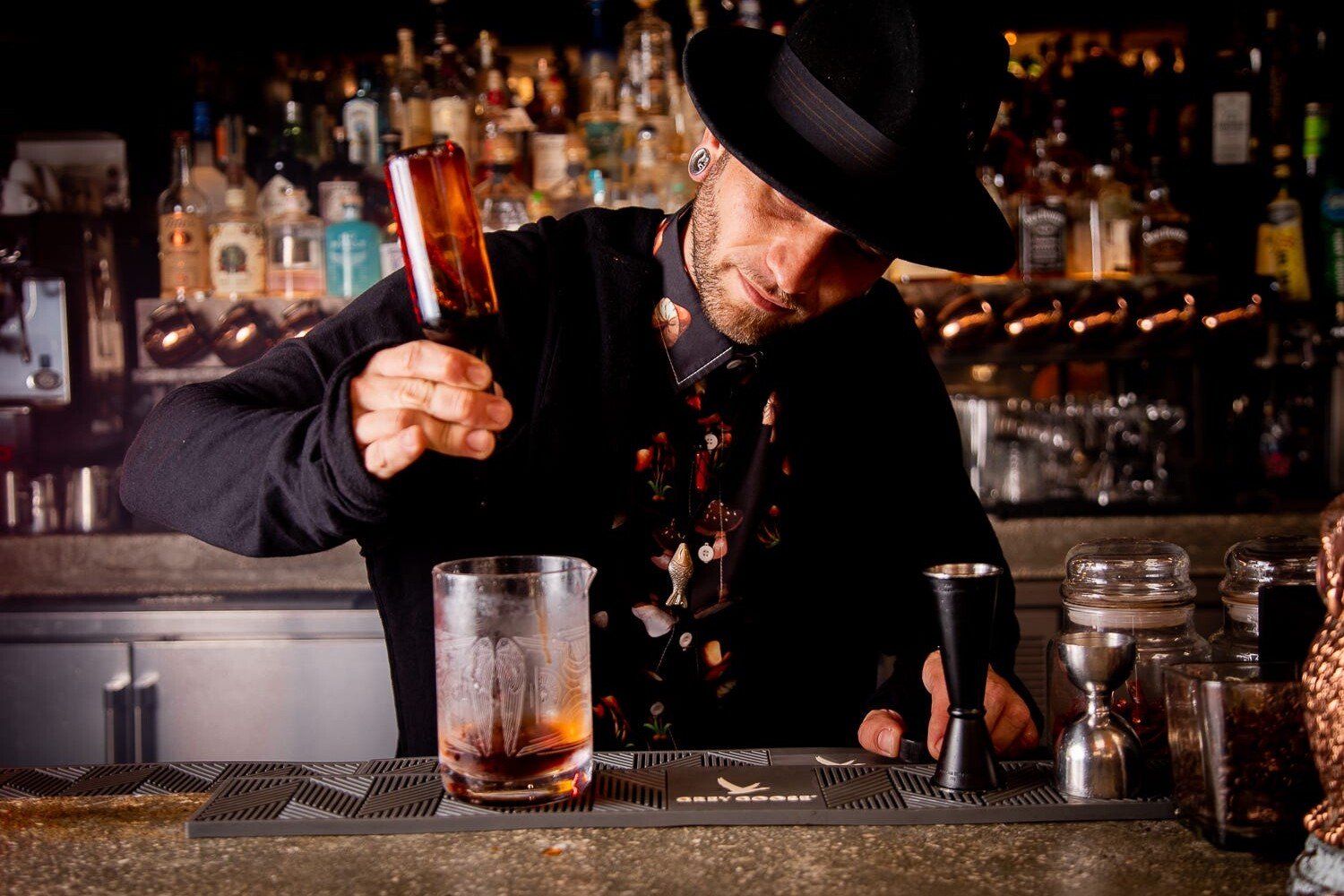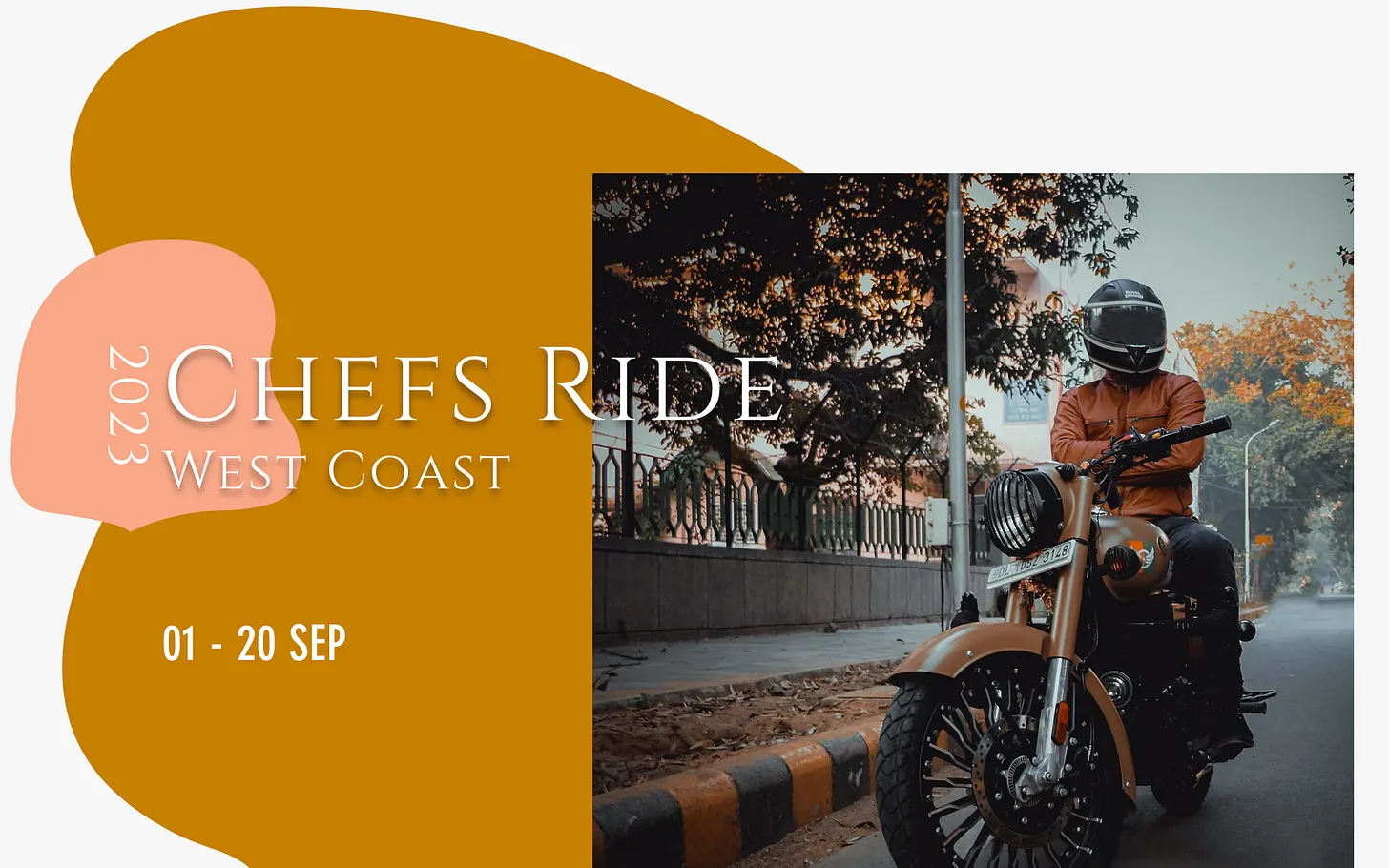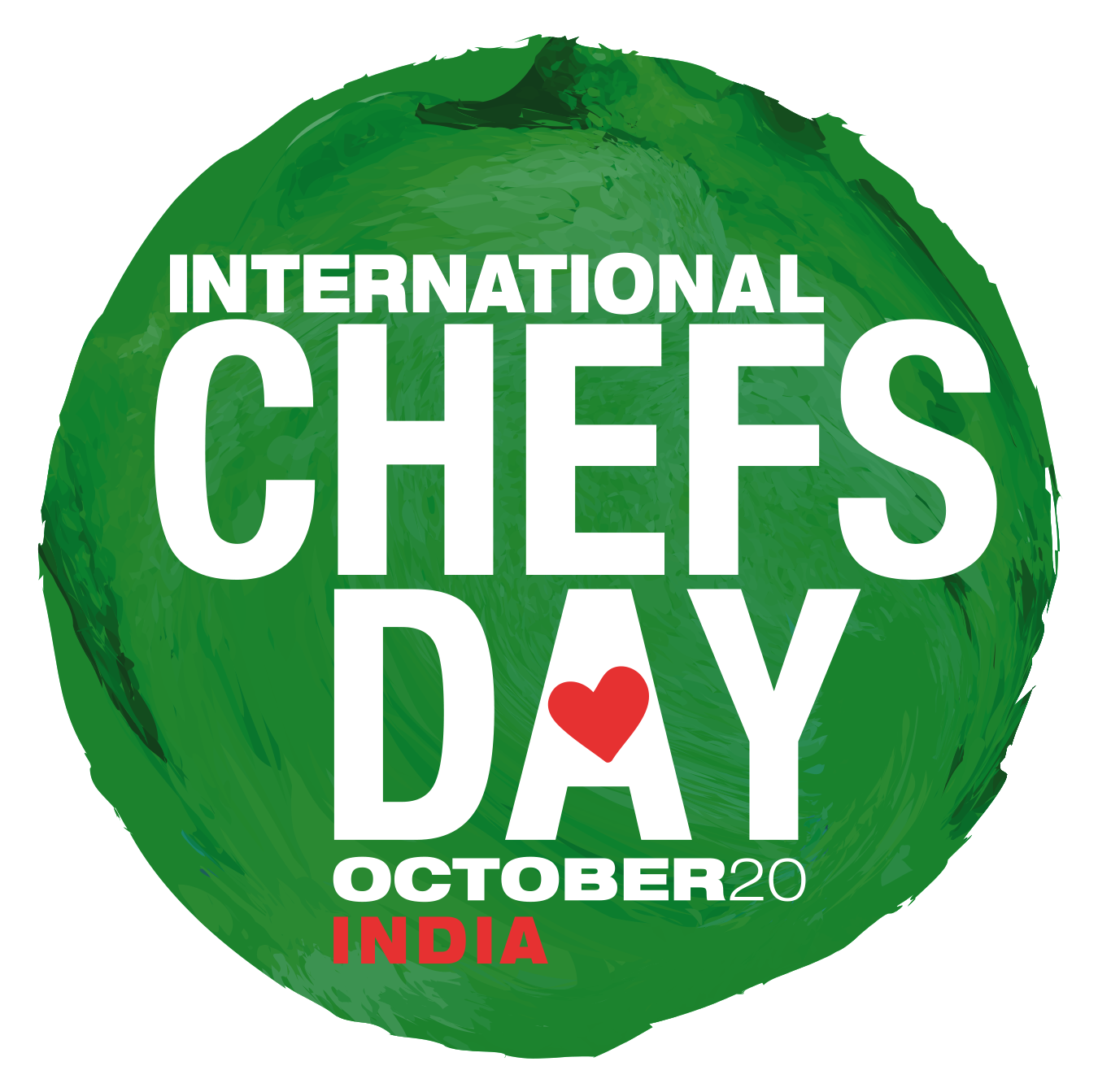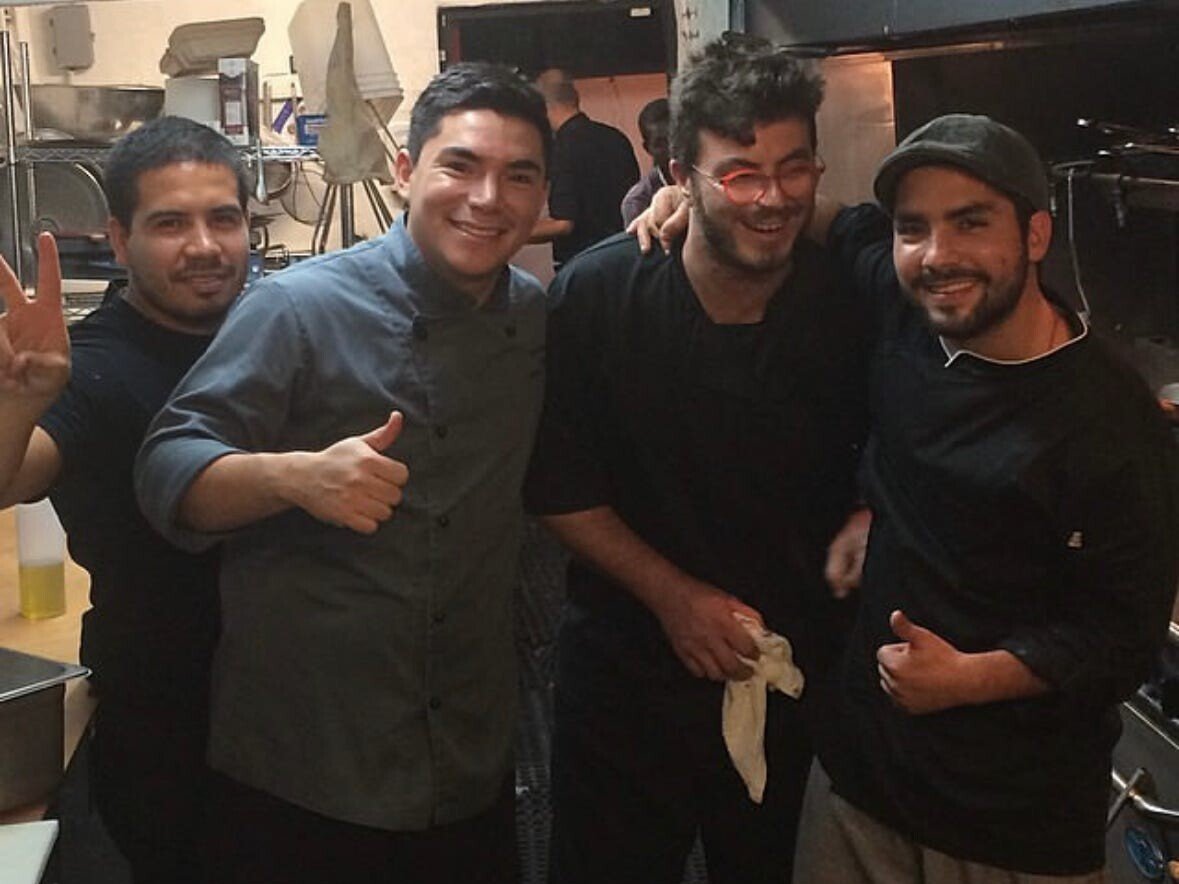Dimitra Badounou
Dimitra Badounou
I’m originally from Corfu, Greece. When I was a kid, I used to make desserts for my family and they were always impressed with my creations. So, I thought, why not give this passion a shot? There are so many ingredients to mix and match, and I love that I can experiment with almost anything that comes to mind.
My culinary journey began when I was 21, and it was tough at first. I had to deal with conflicts with a chef, but despite our differences, she taught me a lot, and she’s still my mentor. At that time, I had to work in the hotel’s fine dining restaurant for dinner service. It was my first time in a demanding job in the hospitality industry. Even though I was just a trainee, I had big expectations and pushed myself to my limits. I worked long shifts and tried to absorb new information to be the best version of myself.
After that experience, I moved to Athens to start my professional career. I had many interviews, met many people in the culinary industry, and eventually landed jobs in two places I had never dreamed of working. I started as a pastry assistant, but before I knew it, I ran the show as the head of the cold kitchen department’s shift. My chef believed in me so much that he picked me to train all the new cooks, even though I wasn’t technically a cook. Then, I moved to Mykonos for a seasonal job. There, I was responsible for preparing all the delicate and technical dishes in the hotel’s kitchen and helping the head chef develop new recipes. It wasn’t easy, though—the head chef thought I was weak at first, but I soon proved him wrong.
Throughout all my experience in this industry, I’ve met some amazing people who believed in me and some who weren’t that nice, but I’m grateful for all the lessons they’ve taught me, especially how to stay calm under pressure. Currently, I live in Crete and have a blast working at @daios_cove. I hope the industry evolves and people start caring more about their jobs. If everyone gives their best, this job would be dreamy.
What is your favorite street food?
Pita Gyros
Which restaurant or food stand do you recommend? (Different from yours) (Add its Instagram handle if possible)
Seeds Restaurant (Athens Greece) @seeds_restaurant
What is your guilty pleasure?
Eating chips
What ingredient do you find overrated?
Black Truffle
What ingredient do you think is underrated?
Lemons
What is your favorite kitchen tool?
My mini Palette knife
What is your worst kitchen nightmare?
Run out of preparations.
Yuu Shimano
Yuu Shimano
I’m from Japan and always dreamed of traveling abroad when I was younger. When I turned 18, I found a culinary school brochure offering overseas training opportunities. I was thrilled and decided to apply to the Tsuji Culinary Institute because of my passion for cooking. I excelled as a top student and even got the chance to study in France. After graduating, I landed my first professional kitchen job at La Villa des Lys in Cannes, a two-Michelin-starred restaurant. I was eager to specialize in classic French cuisine, so I spent seven years on a culinary journey in France.
At 30, I secured a saucier position at the three-Michelin-starred restaurant Guy Savoy. I learned what it means to work at one of the world’s best restaurants there. I felt motivated daily, from dedication to kitchen work to pride in being a chef. After three years, I got offered a chef position at Mifune, a Japanese-French fusion restaurant in NY. I worked there as an executive chef for five years. The company handled the operation and concept. I wanted more creative control, so I recruited my own team to create our unique style, blending Japanese identity into French cuisine.
In 2022, I opened Restaurant Yuu @restaurant_yuunyc and achieved a Michelin star within six months, a source of great pride. Being a Japanese chef specializing in traditional French cuisine in New York City has been challenging. Still, the city’s diverse appreciation for cultures has allowed me to share my message globally. As a child, I wouldn’t say I liked vegetables, but my mom, a great cook, always deliciously prepared them. She frequently made pumpkin soup stewed with other vegetables, which was how I got my vegetables in.
As a chef, I now include it as a welcoming soup in my menu. It warms guests upon arrival and promotes sustainability by utilizing all parts of the vegetables from our other courses. Our restaurant focuses on classic French cooking while incorporating Japanese hospitality and a deep respect for ingredients. My goal is simple: to make our guests happy and earn respect as a chef.
What is your favorite street food?
Taco
Which restaurant or food stand do you recommend? (Different from yours) (Add its Instagram handle if possible)
Blue Hill at Stone Barn
What is your guilty pleasure?
Haribo
What ingredient do you find overrated?
Caviar
What ingredient do you think is underrated?
Japanese Rice
What is your favorite kitchen tool?
Korin Knife
What is your worst kitchen nightmare?
My team and I making the same mistake on a second time. When guests are not satisfied.
Photo 📷 by @jordansapally
Magdalina Stamova
Magdalina Stamova.
.
I come from Plovdiv, a charming place in Bulgaria with an old town full of character. When I was about 40, I moved to the UK because Bulgaria had few jobs and little money. My first job in the UK was as a kitchen porter in Tonbridge, Kent. It was quite a change from my managerial role back home in a food production company. I used to oversee a big team and organize everything down to the smallest detail in a nationwide organization that makes sausages, salami, and other charcuterie products.
Then, I moved to London seven years ago and started working as a prep chef at Parlour in Kensal Green. I begin my day in the kitchen at 8 am, baking soda bread, and finish by 4 pm. Usually, my daughter comes to pick me up from work after collecting my grandson from school. We get to spend long afternoons together as a family. It’s much better than cleaning the plancha at 10 pm after a 13-hour shift. That’s why I love to be a prep cook as I have time in the afternoon for my loved one’s.
I enjoy preparing Chicken Kyivs each week.. However, making hash browns can be messy and is not my favorite task. Regarding the industry, I believe there should be more women in the kitchen. There are only four women at Parlour, including myself, but we need to have more representation. My dreams for the future are pretty simple; all I hope for is good health and happiness.
What is your favorite street food?
I’m a vegan now and mostly eat at home!
Which restaurant or food stand do you recommend? (Different from yours) (Add its Instagram handle if possible)
Somewhere back home in Plovdiv! Bulgarian food and Bulgarian music. It’s called Sunny Beach
What is your guilty pleasure?
I eat salad twice a day! I don’t do guilty pleasure. Two apples is the closest I get.
What ingredient do you find overrated?
Chocolate & Sugar
What ingredient do you think is underrated?
Beans. Bulgarian bean soup is delicious.
What is your favorite kitchen tool?
Robot coupe!
What is your worst kitchen nightmare?
Raw Kyivs!
Photo 📷 🎤 by @darklingcaptures 🇬🇧
Chef Jesus
Cheft Jesus
I’m from El Salvador. I never thought I’d become a cook, as I studied clinical laboratory science back home. Seeking a better future, I left El Salvador and arrived in Miami, where the only doors open to me were in restaurants. I started in the dish pit, washing dishes, and it took me three years to find a place where I truly felt at home. Despite limited options, I knew I had the power to choose the right place. Thirteen years ago, I entered the kitchen of Camilas Restaurante Miami, a Brazilian buffet in downtown Miami, and I haven’t left since.
I remember the early days, learning from kind Brazilian chefs who patiently taught me about their culture and cuisine. Though I never attended culinary school, they shared their expertise and helped me master the most minor details. While food and language differ from what I knew in El Salvador, our shared love of rice and beans united us. I learned enough to become a kitchen manager.
Camilla’s has been a Miami staple for 35 years, offering a taste of Brazil in the heart of the city. Working in a buffet is unique, as we focus on cooking in the morning and prepping in the afternoon. Our goal is always to provide the best for our customers. Cooking has taught me to appreciate many things, like the simplicity of making perfect rice.
As the city continues to evolve, I’m proud to be part of a new generation of cooks. I’m mentoring a young boy, teaching him to cook and wash dishes, just as I was trained. This sense of continuity and fellowship is essential to me and the kitchen. Witnessing the growth of other individuals in the industry and the shared passion for serving good food to people gives me faith in humanity.
Sarah do Vale
Sarah do Vale.
I am a Brazilian who grew up in a restaurant kitchen. My mother and maternal grandmother owned a restaurant and also sold street food. Cooking has always been the primary source of income for my family. My earliest memory of cooking is when I was six years old, and my mother taught me how to fry an egg. I was taught to respect the profession and approach cooking and serving with affection and care. Today, I bring this philosophy to my kitchen and strive for one made with respect, care, and dedication.
I’ve been in this industry for 20 years now, and I still remember my first job as a dishwasher. A moment in the kitchen that marked me forever was when I moved from one state to another to work with a chef I admired. I learned a lot from him, and it was worth pursuing a dream and gaining valuable experience. Even though I was away from my family and friends, it took a lot of courage, but I was rewarded with knowledge and good experiences.
In the future, I hope to see changes in the restaurant industry regarding low wages, inadequate work environments, and excessive working hours. Unfortunately, the industry is not given the respect and attention it deserves. There are still chefs and restaurant owners who believe that the kitchen is a place of humiliation and disrespect, and this needs to change.
What is your favorite street food?
Hot dog
Which restaurant or food stand do you recommend? (Different from yours) (Add its Instagram handle if possible)
@barpadrin @pedemarmelogastronomia
What is your guilty pleasure?
Ruffles flavor BBQ
What ingredient do you find overrated?
Filet mignon and salmon
What ingredient do you think is underrated?
Cuts with bones, like stinco
What is your favorite kitchen tool?
My chef’s knife 8”
What is your worst kitchen nightmare?
Forgetting the gas on or the fryer on
HOTK Admin
Hanuman’s unique Approach to food and his Quest into Pre-World War Two Thai Cuisine.
How often have we heard a chef advise a young cook, saying, “Forget culinary school, come work with me, and I’ll teach you everything—while you get paid?” It’s a typical story in the culinary world.
The truth is that culinary schools are valuable sources of knowledge, but they won’t magically turn you into a top chef. Becoming a great chef involves hands-on experience, time in the kitchen, and a solid commitment to improving.
Certainly, culinary schools have their advantages. They introduce students to different cuisines, teach essential skills, help them connect with others in the industry, and provide insight into running a culinary business.
But there’s a challenge: traditional culinary education often struggles to keep up with the ever-changing restaurant industry. This makes us wonder about the value of culinary school and how it can be more affordable so that more aspiring chefs can learn and expand their horizons. During my trip to Thailand, I had the chance to meet someone with a unique approach to teaching culinary who flipped the script with its approach, challenging the status quo and leaving a profound impact in a short time.
It all started with a recommendation from a fellow chef recently returning from Chiang Mai, impacted by a culinary adventure in northern Thailand.
I asked a straightforward question: “What culinary experience truly left its mark on you?” Without hesitation, the response was clear, “You’ve got to meet Hanuman.” No hesitation, no doubts.
Inspired by this recommendation, we embarked on a mission to connect with Hanuman, navigating the challenges of tight schedules and last-minute plans. Our destination was Chiang Mai, where Hanuman’s culinary sanctuary was tucked away just 40 minutes from the city center, nestled amidst nature.
Hanuman, an Israeli native who has called Thailand home since 1988, Hanuman’s life journey has been a fascinating blend of careers and passions.
“I like to say that I came to Thailand only once and never left. So yeah, I’m on a 34-year holiday,” His journey began as a general surgeon back in his homeland, transitioning into the gem and jewelry industry upon his arrival in Thailand.
However, Hanuman’s focus shifted to the culinary world a specific niche that takes us back in time. “What you call Thai food can be semantically referred to as Thai food when Thailand was established in 1939. Before that, we called it Siam and Siamese food.”He specializes in Pre-World War II Siamese cuisine of the early 19th hundreds.
His culinary journey, spanning over 30 years, started with a deep dive into understanding the cuisine, researching, reading, tasting, testing, and even learning a whole new language.
Go to Thai Food Master if you would like to start your learning journey.
Hanuman’s teaching philosophy is built on the idea that there are layers of understanding between a recipe and a dish. He explains, “You see, we have four layers between a recipe and a dish. Here is what we understood about his layers theory:
The Ingredient Layer: At the foundation of every dish, there’s a fundamental interconnection between ingredients, and this interplay is not arbitrary. Each ingredient is carefully selected and combined with others for a specific purpose. It’s like a symphony where every note has its place, contributing to the overall harmony of the composition.
The Cultural Layer: Beyond just ingredients, there’s a cultural layer that envelops each dish. This layer encompasses the influence of the dish’s culture, including its religious codes, traditions, and historical significance. It’s like understanding the cultural backdrop of a piece of art—knowing the context enriches the experience.
The Culinary Layer: Here, Hanuman delves into the technical aspect of cooking. It’s not merely about assembling ingredients but also the techniques used to prepare them. This layer involves understanding the intricacies of cooking methods, temperature control, and timing. It’s akin to learning the grammar of a language—the structure that holds everything together.
The Magical Layer: This is where Hanuman introduces an element of wonder. The culmination of the first three layers—ingredients, culture, and culinary techniques—creates something unexpected and almost magical. The spark ignites when all the components align perfectly, resulting in a dish that transcends expectations. It’s like a surprise twist in a captivating story, where the outcome is more extraordinary than anticipated.
Hanuman’s work is similar to being an archaeologist of flavors. “So my work is basically going through the old books, finding and identifying these patterns, and seeing how they are arranged.”
Go to Thai Food Master if you would like to start your learning journey.
He continues, “When I teach Siamese culinary arts, we treat that as a modular progression. So we have patterns that are coming on top of each other until you get a dish.”
This modular approach is a crucial aspect of Siamese cuisine. “Because the heart of the dish was not developed linearly. It means I can take your dish and add something to it change it a little bit and get a new dish. So when we identify those modular patterns, we can teach a language.”
In just a week or two, his students gain a profound understanding of this culinary language, on top of which you can keep and promote it or develop it in a linear manner.
However, it’s not just about cooking; it’s about thinking. “What we do mostly is thinking rather than cooking because we learn how to think, and once we know how to think, we can cook.”
For Hanuman, cooking is more than following a recipe; it’s a creative endeavor rooted in understanding. “Don’t think you can cook if you don’t have a vision. Don’t think you can cook if you don’t have a path.”
He underscores the importance of culinary fluency, comparing it to language learning. “You cannot cook in a vacuum. You must be connected to something. “So if you want to cook ethnic cuisine, traditional Siamese cuisine, or traditional Thai cuisine, you must have a set of visuals to make you fluent in the kitchen.”
Video at Three Trees Doi Saket Hanumans Farm
Hanuman’s teaching philosophy is grounded in embracing creativity. “I want you to be free of the recipe. I want you to understand the language. I want you to understand the lyrics so you can perform and find your own voice.”
He emphasizes that cooking is a deeply personal expression. “I don’t want you to cook like me. I don’t want you to cook like somebody else. I want you to cook like you should, and that’s what we do here.” We learn how to cook by learning how to think.”
His quest for knowledge extends beyond the conventional, and since the entire literature on old Siamese cuisine is ancient. He believes in decoding the language of flavors left behind by generations past. “The beauty of that system is that it’s like a Bitcoin when I find a pattern. You can find your own patterns. It’s not that I found a pattern, and that’s it. You can find your own patterns.”
As I walk through Hanuman’s serene farm, his passion for a simpler, nature-infused life shines through. He built this haven to escape the city pace and immerse himself in what truly matters. His deep connection to nature profoundly influences his culinary journey. Hanuman explains how a slower, deliberate pace allows him to understand why specific ingredients shine during particular seasons. It’s a reminder that nature itself plays a pivotal role in the evolution of culinary history.
As we begin the short cooking class, he grabs a mango and tells me, “Don’t ever call it unripe mango. Call it green mango. Unripe mango means you judge it as if it’s not ready enough.”
He emphasizes the importance of understanding the nuances of ingredients. “Don’t judge your ingredients. They have a state, and this has a green state.”
Hanuman doesn’t see cooking as a mere skill; he sees it as a language, a way of expression as profound as any other. His perspective seeks to uncover the stories within dishes, connecting them to their cultural origins and historical narratives.
His culinary philosophy invites us to embark on a journey of culinary exploration. It encourages us to go beyond recipes, understand the “why” behind culinary techniques, and break free from rigid scripts, empowering cooks to create narratives to compose their own culinary symphonies.
In an industry where culinary education often faces criticism for its high costs and outdated curricula, Hanuman offers an intriguing alternative. It’s an approach grounded in mindfulness, curiosity, and a deep connection to the world.
Find below some images and dishes made and photographed by Hanuman:
We hope this article ignites a fresh perspective on food and catalyzes your culinary journey in Thailand, inviting you to experience the magic of Hanuman’s farm firsthand.
Go to Thai Food Master if you would like to start your learning journey.
September 7, 2023
HOTK Admin
Hanuman’s unique Approach to food and his Quest into Pre-World War Two Thai Cuisine.
Leaving Room for Adventure: Sure, improvisation’s awesome. But blindly trusting top restaurant lists or TikTok vids while you’re traveling, without digging deeper can sometimes lead to a bit of a letdown. Especially for those of us who take food disappointment kinda seriously. Feel free to try out these tips during or before your travels – we hope they come in handy!
Harvest Season and Food Festivals:Visiting a town or country during their pick of food festivals or harvest times is key to having an awesome time. Europe’s got some cool events, for example, in Turin, Italy, the Cheese Festival or the Terre Madre Slow Food Fest, and in France, the Lyon Street food festival happening between September and October. Google it and start researching and Checking out blogs or sites highlighting these food-filled happenings each month so that you can plan accordingly better. We found this helpful blog about Italy’s food festivals,which has improved our travel experience In Italy.
National Dishes: Do a little research before you go. Get the scoop on what local dishes are the most- try and from what regions or towns they are originally from. Create a list of towns with your favorite foods. You could totally mix it up – mountains one day, seafood the next. It’s rad to stumble upon hidden gems where locals are stoked to share their culinary traditions. If a road trip isn’t on the agenda, It’s okay. You’ll have the know-how: say you’re in Madrid craving ‘Pulpo a la Gallega,’ you’ll already know it’s a Galician specialty. Just flip through some local guides and uncover the finest Galician joints in Madrid, enjoy your Octopus, and maybe have a few beers with a stranger in the bar!
Anthony Bourdain Vibes: You’re headed somewhere cool, right? Check if Bourdain left his mark there—it’s a must-do. Do you know those blogs that break down his epic trips? Like “Bourdain in Istanbul” or “Bourdain in Thailand.” Trust me, there’s gold in those stories. Oh, and this site Eat like BourdainThey did the hard work, listing stuff by country and city after watching every single episode. But hey, heads up! Some places might not exist anymore, and thanks to Covid, things got worse. So, make sure to research if the places are still open.
Local Food Guides: Before you jump into the Michelin Guide, give the local guide a whirl. It’s like insider info straight from the source. Take Thailand, for example – Chevron’s got a guide for locals made by a local chef. They know their stuff; you’ll find real gems beyond the tourist spots. These local guides must be searched by the country’s language; if you type in Google in English, you will get all the American bloggers or publications from outsiders. Do yourself a favor, and Google translates a couple of prompts to search for food and local guides of the country or city you visit. This will result in dropping you the guides that the locals make for the locals.
Street Food Tours and Culinary Classes: Getting to know a city’s real vibe means diving into its street food, local cafes, and markets—where the locals hang out, skipping the Hipster cafes and high-priced restaurants that most people can’t afford. Those food tours are like your crash course in the local scene. We tried this firsthand with A Chef Tour in Thailand and in Istanbul with My local guide Istanbul; it was a game changer. We not only learned about all sorts of street food and their stories but also made the rest of our trip super chill. And it’s not just during the tour; these experiences set you up to cruise through the food scene and pick up tips about using public transport and shopping where the locals do. It’s like insider info that travel agencies can’t match.
Go to A Chef Tour if you would like to start your learning journey.
Looking into culinary classes in a foreign country can be tricky, especially if you are already knowledgeable about the cuisine or if you are a chef or a cook. It’s not that you won’t learn something new in those Airbnb fun classes where everybody looks awkwardly happy. Ensure the person teaching is a proper chef or a grandmother who knows her craft. Ask them through direct messages if the classes are for chefs; some may give you a private class or recommend you to another friend.
When we were in Thailand, we asked around to some chefs and received an excellent recommendation. It was a class targeted explicitly for chefs, and the teachings were about pre-World War Two cuisine from Thailand called Siamese cuisine. Hanuman lives on a fantastic farm where most of the ingredients are harvested. We will have a whole article about this experience in the future because his knowledge and vision for culinary arts were quite unique. In the meantime, here is his website Tai Food Master if you plan a trip to Thailand soon.
Go to Thai Food Master if you would like to start your learning journey.
Awards Lists and More: Michelin Guide, 50 Bests, and James Beard Awards definitely have their value, but it’s not all about those glitzy accolades. Please take a moment to look them up, see what the locals are saying about that specific restaurant, and trust your instincts. Sometimes, the little, unassuming spots beside those joints hold the most unforgettable flavors. We’re convinced that about 30% of those places endorsed by Michelin are more for tourists, not locals. When you chat with a local, they often see things differently. Sometimes, a place was good before it got that star or review, but afterward, it lost its way, focusing on the fame and forgetting what made it outstanding from the get-go. Other times, you’ll find hidden gems that are absolutely fantastic, but they just don’t hit the Michelin mark. Maybe the bathroom is squeezed, the seating is tight, or it’s sitting in a quirky location. So, don’t just go blindsided by the star or the recommendation; look into it and chat with a local about it.
Bars and Bartenders – Every bartender has a Chef friend! That’s the classic bond of the industry. One notable difference between a bartender and a chef is that chatting with a chef in a restaurant can be challenging, especially in a country where you don’t speak the language. However, bartenders, are in the front of the house ready to pour you a delicious drink and engage in a great conversation, which increases the probability that they speak another language fluently. In this particular situation, we are specifically looking for two types of bars: craft beer and top-rated cocktail bars, often featured on the 50 Best Bars list. If you engage with the bartenders in craft beer bars, you’ll find that they serve as the custodians of some of the best bar or street food you can discover in town. On the other hand, the bartenders at top cocktail bars generally possess extensive experience, having worked alongside chefs for quite some time. They are well-acquainted with the places where chefs dine, or they might even introduce you to an exceptional hyper-local pop-up that you wouldn’t have known about if you hadn’t met them.
We hope the information was helpful to you. In the upcoming months, we will start delving into more details and providing information about our travels, along with other cool recommendations, so that you can enjoy a more sustainable and local travel experience.
Support our project by grabbing some badass merchandise. Your support rocks!
August 30, 2023
HOTK Admin
Spotlight on India’s International Chef Day Initiatives and the Call for Worldwide Collaboration.
Do you know when International Chefs Day is? It’s coming soon, on Friday, October 20th!
In India, chefs are uniting for a cross-country road show and community initiative, “Chefs Ride 2023 – West Coast“, to raise awareness for International Chef’s Day and make it a public holiday across India by 2030. That made us stop and ask what the hell we are doing in our communities or workplaces to celebrate this important Day.
In a collaborative effort, Humans of the Kitchen is uniting with the movement to support and promote International Chef’s Day (ICD) in India and globally. While this Day is recognized worldwide, It lacks celebration and awareness. Instead of mere verbal acknowledgments (“Happy Chef Day”), we seek to shed light on the crucial role that chefs and cooks play in our society and raise awareness to celebrate them properly!
Start-End Cities: Thiruvananthapuram-Ahmedabad
Main Organiser: Chef Alan DMello (@alandmello)
Recognizing the significant progress achieved by International Chef’s Day in India since 2014, Humans of the Kitchen is committed to expanding the reach of their message. Collectively, we advocate for a transformative shift in how we celebrate the Day, envisioning it as a universal movement that honors all participants in a professional kitchen. This movement transcends workplace boundaries and business sizes, aiming to unite a community with a passion for culinary craftsmanship. Moreover, it seeks to garner overall respect and appreciation from the public and the communities served.
So, whether you’re a chef, a foodie, a cook, or a customer, these are 5 Simple Ways to Celebrate International Chef Day!
If you are a Cook or a Chef or part of the industry, consider this:
- Chefs, cooks, and restaurant owners should celebrate alongside their teams. Without the team’s efforts, the chef’s role or the restaurant’s success wouldn’t be possible. Therefore, on that day, acknowledge your team and share a special meal with them—take a bit more time during the family meal. Introduce a unique ingredient to experiment with something fresh together, fostering team bonding.
We might not all be chefs today, but we share a spark. The instant we sense the rush during service and invest our hearts in a dish—whether in a high-end kitchen, a small cafeteria, or even a street food cart—then vend it to the public, relishing their reactions as they indulge. This sensation is what unites us and merits celebration across the industry.
- Share a meal/snack with the less fortunate. Recognize that not everyone has the privilege of dining out. Restaurants with extra food can make a difference by giving back to the community. Sharing a meal with someone in need or even providing a table reservation to a family in difficult circumstances can have a tremendous impact. A small, heartfelt gesture can make a positive difference in the community and touch the lives of those who require support.
If you are a family, friend, or customer, consider this:
As restaurant customers, how many beautiful moments have you celebrated with your loved ones over food? Often taken for granted, it’s easy to forget that during that memorable New Year’s Eve dinner or that delightful meal, an entire team worked within the kitchen, foregoing fireworks and time with their families, all to be there for you. Overlooking the fact that not everyone is privileged enough to be served, some even develop a sense of entitlement, treating service industry professionals as if they are beneath them.
- Going the extra mile by tipping the kitchen staff is a beautiful gesture. It’s worth considering if you can show appreciation for the chef or kitchen workers! Let the manager know it’s International Chef Day, and express your desire to contribute $10 or $20 to the kitchen. This small act can treat them to something special or a drink in the house! Such gestures can truly brighten someone’s evening.
- As a customer, one of the most impactful actions you can take on October 20th (International Chef Day) is to support a local restaurant. Whether you know a chef in your community or have a favorite small establishment, consider enjoying lunch or dinner there. Be kind and send compliments if you enjoy your meal. We often only speak up to say what’s wrong but not what was great.
- If you’re a friend or family member of a chef or a cook, consider preparing them a meal. We understand that cooking for them might seem a bit intimidating, but let’s set that aside. How often do people actually cook for chefs? Creating a meal for them represents an expression of love and kindness. Chefs frequently find themselves short on time to prepare their own meals after their shifts. Even when they do opt to dine at home, it’s typically something uncomplicated. So, cook a comforting meal for them, and you’ll undoubtedly brighten their day.
To conclude, it’s essential to recognize that the power to bring about change lies within us. There won’t be anyone else to come and improve our industry. The transformations occur through our daily actions and choices and by uniting to strive for a better future. Enhancing the visibility of International Chef Day is merely the starting point for the extensive effort required to elevate the industry. We wanted to share this message in advance so you can coordinate with your team. Just as we prepare for Valentine’s Day or Mother’s Day, we should also prepare to organize and commemorate International Chef Day. Please tag us when you do!
#chefstogether #everychefmatters
#chefsride #HumansoftheKitchen
August 25, 2023
HOTK Admin
From being an immigrant frying chicken wings in a sports bar to creating HOTK.
Hey everyone! Welcome to Substack, our newsletter, where we control our content without relying on a social media platform. Before we jump in, I’d like to introduce myself.
It’s been a four-year journey; perhaps you’ve caught me on a podcast or stumbled upon one of my articles. But you might be curious about who the hell is behind “Humans of the Kitchen.”
I’m Beto Ortiz, a Colombian immigrant who set foot in Miami, USA, 14 years ago at 18. I left Colombia behind because I was a bit of a wild kid. I felt misunderstood, which caused my family quite a bit of trouble. I was a classic problematic Punk Rocker, constantly questioning everything and getting into fights. Colombia and Latin America, back then, were places full of classism and judgment. People sized you up based on appearances and actions, which didn’t end well for me. I found myself in a police station for vague reasons, primarily because of my looks. On another occasion, I was stabbed near my spine, and a good friend spent weeks recovering in the hospital. I spent years blaming Latin America, my culture, and everything else. But in the end, it was all my fault. If you wish to bring about change, wisdom is essential. Being entirely opposed to everything won’t make people hear you. Yet, you know, I don’t regret those experiences. Embracing punk culture enabled me to perceive life and society from an entirely different angle, shaping the person I am today.
My father passed away just a month before I came into this world, so my early days were spent in the kitchen alongside my mom or my nanny, helping prep things or getting ready to host. My mom was renowned for throwing unforgettable gatherings with friends and family. My earliest memory of food is of me near a mill with my nanny munching on the raw “masa” for arepas. Since then, the kitchen has been a place of comfort for me.
When I arrived in the US, I had to start from zero, taking on responsibilities and figuring things out. I began missing the flavors of my homeland, so I turned to my mother for recipes and started cooking myself. Food became my home, yet also my escape. My first job as an immigrant happened to be in a kitchen, frying wings at a sports bar in Miami. It was mainly a one-person show – prepping, frying, washing dishes – you name it. Surprisingly, I discovered I loved it; it grounded me. That’s when the realization hit me: I wanted to explore the culinary world but with a focus on Italian cuisine. A trip to Italy with my culinary school sealed the deal; the culture captivated me. I hopped between different Italian restaurants in Miami until I climbed the ladder to become a sous chef at one. Given my interest in photography, I often captured the chaos and beauty of our lively kitchen; it was a joy to be surrounded by stories from people worldwide. The exchange of culture and knowledge fueled my desire to wake up each day and step into the kitchen.
Then came a pivotal moment. My mentor Andrea, the Chef I worked under, gave me one piece of advice that stuck with me. He recognized something different in me beyond my cooking skills and encouraged me to explore my other talents. As time passed, the Chef decided to retire and venture into a bed-and-breakfast business in Italy. Faced with the prospect of inheriting such a significant role alongside another cook, I stood at a crossroads. While I held immense respect for the cook’s journey to become a Chef, I questioned whether that path was mine and whether I was prepared to step into that role. So, after dedicating six years to the culinary world, I decided to step back and began assisting friends with their restaurant ventures – brainstorming menu concepts, refining design elements, capturing photography; you name it. I even teamed up with a fellow culinary schoolmate to establish a boutique agency offering digital marketing, consulting, photography, and logo design services. We even came close to launching a Pasta-focused restaurant with his family. Yet, once again, I was uncertain if that was my path.
Then, the world mourned the loss of Anthony Bourdain, a genuine icon. I greatly admired him. What drew me to him wasn’t just his status as a rebel chef who shattered television norms but his dedication to shedding light on the unsung heroes, those who often fade into the background – the unnoticed ones and those rarely discussed. Anthony Bourdain became a voice for those who were voiceless, and that aspect deeply resonated with me.
When he passed away, it hit me hard. Who’s going to fill his shoes now? Who will talk about politics in food shows, culture, and the uncomfortable but down-to-earth topics? I was convinced that no one could replace him at all, but I knew I had a responsibility to keep his legacy alive in some form. So, I approached my culinary school partner Michael Kelsey, who happened to be a talented writer, and another friend, a professional photographer Julian Buitrago. I said, “Folks, I have this idea and am determined to bring it to life.” Without their unwavering support, this project would have materialized during those initial two years.
I brainstormed countless times to come up with a captivating name on Instagram. I explored various storytelling initiatives and nonprofit organizations, which led me to discover “Humans of New York.” While impressive, I aspired for something more encompassing. Journalism wasn’t my forte; I considered myself a creative storyteller and a community builder. I aimed to forge a community, orchestrate events, and establish a nonprofit entity. That’s when it clicked, “Why not ‘Humans of the Kitchen’? Is that name already claimed?” A swift Google search and a peek at the URL, and there it was, available for the taking! I entertained the thought of changing it down the road, but for the moment, I thought, “Let’s get this rolling.
Being immersed in the kitchen environment, I had the natural ability to capture those crucial moments. Admittedly, I’m not the world’s most exceptional photographer – I don’t even professionally identify as one – but I am good at capturing those symbolic moments of the kitchen. The response was astounding when we shared our first “Dishwasher” story! Our industry friends were all on board. Chefs wanted us to showcase their teams, unlike the press or the internet, which often is not part of their agenda. We realized we were on to something.
As the second year rolled around, our horizons broadened, and we began sharing narratives extending beyond the confines of Miami. To uphold the essence of our name, I embarked on a self-funded travel experience, capturing stories in Colombia, Guatemala, Mexico, and Italy – places where I encountered talents, connected with families, and reconciled with my homeland. These travels gave me a fresh perspective on the world, and I reveled in it. It became crystal clear – this was my true calling. Roaming the planet, and documenting captivating kitchen stories, was where my heart lay.
By the third year, it was evident that our endeavor required more than merely sharing photographs. It transcended photography and any personal egos. Our mission was forging connections with cooks across the globe, amplifying their stories. I initiated collaborations with other photographers and established a submission form on our website, inviting cooks to share their tales and images, ensuring proper credit.
We also contacted reporters and photographers worldwide – from Canada and Venezuela to Europe and Asia. This morphed our initiative into a community-driven project, uniting like-minded souls who shared our passion for the kitchen and photography.
You see, it’s not just about taking pictures of a perfectly grilled cheese sandwich; it’s about the people behind that sandwich, the stories that make it unique.
As we approach the fifth year of “Humans of the Kitchen,” our motivation has multiplied. Our goal remains at the forefront: to shine a light on the inspiring and often overlooked kitchen tales and organizations dedicated to enhancing the well-being of the food industry workers. All our progress would not have been possible without the inspiration and remarkable work of other chefs, organizations, and friends.
We aim to expand our channel through our Substack by providing a captivating glimpse into the lives of the humans who shape and influence the culinary world and beyond. We aim to build a community-driven platform inviting others to contribute their ideas, recipes, and unique perspectives. This outlet provides a window through which we explore various topics, including food, travel, industry policies, and beyond—giving a voice to the voiceless and unifying the industry worldwide.
Life is too short only to have a version of ourselves. So, Fuck it! HOTK 2.0 is coming in hot. We’re stoked about this new chapter and can’t wait to see where this next step in our journey leads us. Thank you for joining our Substack newsletter – we’re confident you’ll thoroughly enjoy the content we have in store for you.
August 22, 2023






